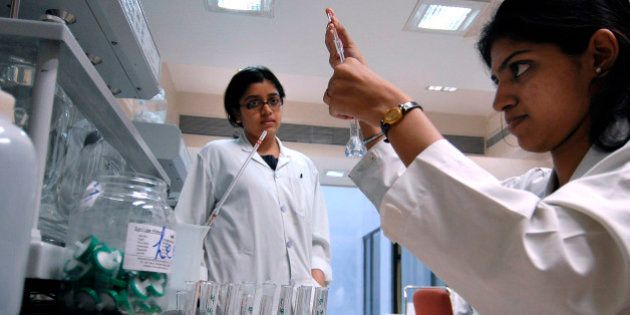
WASHINGTON -- India sends the largest number of engineers and scientists to the US with about 9,50,000 immigrant scientists and engineers coming from the country, according to a report.
The report prepared by the National Science Foundation's National Center for Science and Engineering Statistics (NCSES) said the number of scientists and engineers residing in the US rose from 21.6 million to 29 million from 2003 to 2013.
"In 2013, a total of 9,50,000 immigrant scientists and engineers were born in India, representing a nearly 85 per cent increase from 2003," the report said.
This 10-year increase included significant growth in number of immigrant scientists and engineers, from 3.4 million to 5.2 million.
In 2013, among all 5.2 million immigrant scientists and engineers in the US, 57 per cent were born in Asia; 20 per cent in North America (excluding the US), Central America, the Caribbean or South America; 16 per cent in Europe; six per cent in Africa and less than one per cent in Oceania, it said.
"Among the Asian countries, India continued to be the top country of birth for immigrant scientist and engineers in the United States," the report said.
Observing that immigrants went from making up 16 per cent of the science and engineering workforce to 18 per cent, the report said while 63 per cent of US immigrant scientists and engineers were naturalised citizens, 22 per cent were permanent residents and 15 per cent temporary visa holders.
Since 2003, the number of scientists and engineers from the Philippines increased 53 per cent while the number from China (including Hong Kong and Macau) increased 34 per cent.
The report found that immigrant scientists and engineers were more likely to have earned post-baccalaureate degrees than their US-born counterparts.
In 2013, 32 per cent of immigrant scientists reported their highest degree was a master's (compared to 29 per cent of US-born counterparts) and 9 per cent reported it was a doctorate (compared to 4 per cent of US-born counterparts).
The most common fields of study for immigrant scientist and engineers in 2013 were engineering, computer and mathematical sciences and social and related sciences.
Over 80 per cent of immigrant scientists and engineers were employed in 2013, the same percentage as their US-born counterparts.
Among the immigrants in the science and engineering workforce, the largest share (18 per cent) worked in computer and mathematical sciences, while the second-largest share (8 per cent) worked in engineering.
Three occupations - life scientist, computer and mathematics scientist and social and related scientist - saw substantial immigrant employment growth from 2003 to 2013, the report said.



Contact HuffPost India
Also see on HuffPost: